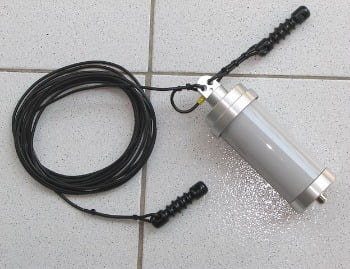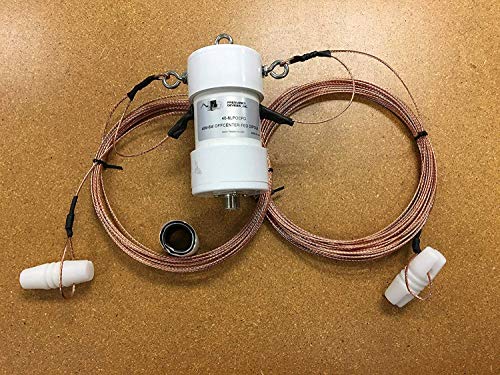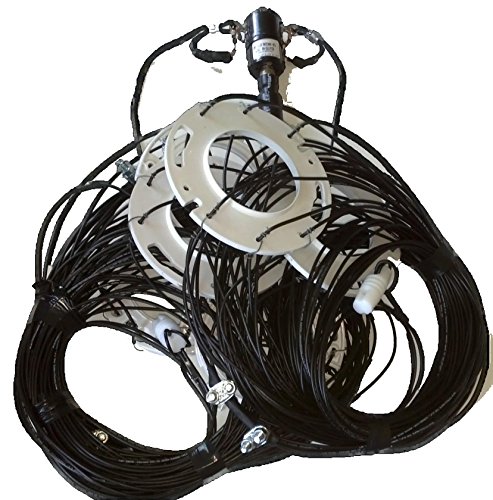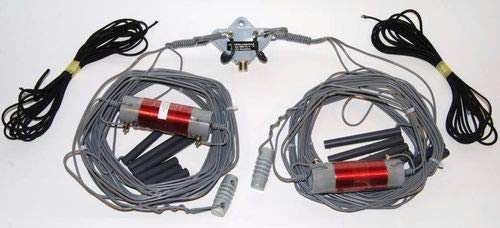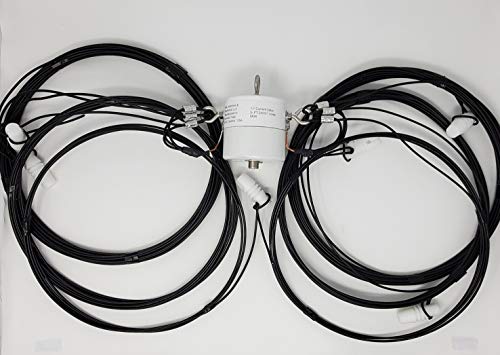Have you ever wondered how you get to stream and listen to your favorite radio shows?
I bet you don’t. Thanks to the best dipole antenna that allows you to listen to radio stations from wherever you reside.
Dipoles rank among the easiest antennas to build, construct or erect for HF amateur radio bands.
Commonly used on bands like 80 meters, 40 meters, 20 meters, 15 meters, and 10 meters, dipoles are very useful and can perform excellently well if erected at a high elevation.
Often used outdoors, dipole antennas emit signals in all directions.
In this article, we’ll be considering some of the best dipole antennas on the market, their features, pros, and cons. Let’s get started!
Best Dipole Antenna Comparison Table (Updated 2023)
| Brand Name | Detail |
|---|---|
| MFJ-1778M | |
| Ni4L Antennas & Electronics | |
| WINDCAMP | |
| Ni4L Antennas OCF 8 Bands | |
| Sirio SD 27 Dipole | |
| Frequency Devices | |
| Ni4L Antennas 40 Meter | |
| Alpha Delta | |
| Ni4L Antennas HF 3 Band |
What is the best dipole antenna?
The best dipole antenna ranges from MFJ-1778M G5RV wire antenna to HF 3 Band Fan dipole multi-band antenna.
You can choose any dipole antenna from our list of best dipole antenna based on your specific requirement.
However, the MFJ-1778M G5RV wire antenna is our top as the best dipole antenna for obvious reasons which we will discuss further as you read.
Why MFJ-1778M G5RVis the best brand for dipole antenna?
Due to the multi-efficient feature, broadband coverage, and strong signals, MFJ-1778M G5RV is pegged as the best brand for dipole antennas.
Top 9 Best Dipole Antenna Reviews & Buyer’s Guide
01. MFJ 1778M G5RV – Best Budget Dipole Antenna

Highlighted Features
- Have a power rating of 1500 watts
- The frequency range is 40-50 meters
- Multiband, non-resistant wire type
- The Center Insulator is 14-gauge
- Feedline connection type is UHF female, SO-239
MFJ 1778M is one of the famous radio antennas around.
Having a wide range antenna tuner covering many bands from 40-10 meters, the G5RV antenna provides broadband coverage with a wire antenna.
Designed as 3/2 wavelength antennas for 14 MHz, the G5RV is quite long, has a strong base, and can handle as much as 1500 watts.
It’s made like an inverted vee or sloper for more compactness.
The G5RV emits strong signals which are heard on every band, both day and night. Little wonder it’s considered an efficient multi-band antenna.
The product has a 16 ft. ladder-line matching section which terminates in a SO-239 connector, giving rise to a coaxial feed line.
G5RV JR’s are wired to a balanced 450-ohm line which ends in a SO-239 connector. Connect a 1:1 choke balun to the feeder linked to an unbalanced line.
The choke balun will help reduce or stop RFI, RF feedback, potential RF burns, and other issues associated with excessive RF. Air-core coaxial choke balun is the best-recommended Balun for these antennas.
Pros
- Can hang antenna
- Easy installation
- Very portable and great for low power application
- 10-80 meters long
Cons
- Limited bandwidth ability
02. ZS6BKW / G5RV Optimized Multi Band – Best Quality Dipole Antenna

Highlighted Features
- High strength aerial wires
- Weather-resistant PVC
- Two end insulators
- It requires 92 inches of space for optimal performance
- SS hardware
If you’re a fan of G5RV, then you’ll like ZS6BKW. An advanced version of the old G5RV, the ZS6BKW antenna works on only 10, 12, 17, 20 & 40m bands, unlike the former G5RV.
It operates without a tuner, and its SWR readings are usually at 1.5:1 or less.
When connected to a tuner, the antenna works on 6, 15, 30, and 80m bands more efficiently than the original G5RV.
Handcrafted with materials tested and trusted by Ni4L for quality & durability, each antenna performs at its peak.
Within a space of 92 inches, hang your antenna in a flat or inverted form, at a height of 40′ or more. Erect the antenna on high elevations like towers, fences, and the likes.
Just like other models of G5RV antennas, the optimized variant needs a minimum length of 70 ft and 50-52 ohm coax to complete the matching network.
Without the coax, the antenna won’t function well. The antenna is made of polystealth 13 wires, which are quite strong, flexible, and can withstand harsh weather conditions.
Featuring ladder lines that are less likely to break in the wind, ZS6BKW seems like the best option.
Pros
- Work efficiently when connected to a tuner
- Durable and well-constructed
- Great and sturdy product
- Superior height
Cons
- Limited bandwidth
03. WINDCAMP Gipsy Horizontal Dipole Antenna

Highlighted Features
- Standard half-cycle dipole antenna level
- Damp-proof Carbon Wei Balun
- General quad-band (5/7/14/21/28-29/50MHz) mark
- Customized canvas pouch
- The overall mass of 0.4kg
If you’re in need of a functioning large antenna that offers great QSO experience, then Gypsy horizontal antenna is your best bet!
The full-size half-wavelength dipole antenna can be mounted horizontally, vertically, inverse V-shaped, or cable-stayed. Inverse V erection is the best way to mount this antenna.
Roll the irradiator on the reel to change the resonant frequency to 5-50MHz.
There are 9 radio amateur bands, including 5, 7, 14, 21, 28, 29, and 50 MHz, indicated as resonance points on the irradiator.
These bands aid working frequencies of radio. Gypsy antenna was constructed with respect to the efficiency of the decibel scale, which is the sound intensity.
The gypsy dipole is relatively bulky, reels, and can be held with one hand. The oscillator system easily modifies the switching frequency.
Pros
- Easy handling
- Accurate frequencies
- Great antenna
- Well-constructed and durable
- Simple design with great performance
04. OCF 8 bands 160-6 HF Windom antenna

Highlighted Features
- OCF 8 bands 160-6 HF Windom antenna
- Ni4L Dipole Antenna
- Weather and UV resistant
- Excellent abrasion resistance insulation
- High strength aerial wires
Designed from high-quality, sophisticated aerial wire, this dipole is highly flexible and has rope lay construction strength.
The wires are also known as “wire rope” or “jeweler’s rope.” Unlike the copper-clad wire, it does not twist or rust out.
The wire works well with quads, dipoles, long wires, and rapid deployment antennas.
Its application is seen in commercial firms and government agencies. Due to the high abrasion resistance, OCF 8 bands may be installed on trees.
The dipole also supports usage on the sea coast as its UV and water-resistant.
It also has high resistivity to acid rain, high wind, snow, and ice. With the capacity to handle the power of about 2KW PEP, the W2AU seems to be the most desirable Balun choice.
W2AU Baluns are made of ferrite cores which promote coupling efficiency.
Each Balun has a lightning arrestor; hook for hanging, and 600 pounds of pulling strength enclosed with a stainless steel body and durable materials.
There are two available models: The 4:1 unbalanced coax matches which are 75 ohms and 300 ohms folded dipoles. This dipole can hang flat or in an inverted V configuration.
Pros
- Well-built product
- Has versatile use
- High flexibility and resistance to harsh conditions.
05. Sirio SD 27 Dipole CB/10 Meter Base Antenna

Highlighted Features
- Turning radius
- Base station antenna
- Dipole frequency range
- Works on 27 MHz band
- It uses Gamma Match System
- Aluminum, steel, or nylon material
Made from anticorodal aluminum and supplied with a boom and steel bracket for fitting on the support mast, the 1/2 λ dipole antenna works on a 27 MHz band with Gamma Match System.
The fixing part with a rapid mounting system is built from cast metal; hence they’re strong and robust.
For perfect waterproofing, the radial whip is earthed and supplied with joining sleeves of polythene.
Pros
- High tensile strength
- Has waterproof element
- Great power handling capacity
Cons
- Some users complain that it didn’t perform as expected
06. 40-6LPOCFD Off Center Fed Antenna

Highlighted Features
- UHF connector
- Internal locks
- The antenna handles 125 and 1,500 Watts continuous and PEP respectively
- Components are top-quality
- Stainless steel hardware
Covering 40, 20, 10, and 6 meters with SWR less than 3 to 1, this radio antenna meets the National Electrical Code for antennas.
The off-center fed dipole is powered by 125 Watts continuous and 1500 Watts PEP.
It’s a one-half foot long, with one side being 23 feet long and the other 45.5 feet long.
The antenna is built from stranded hard-drawn copper wire. All hardware is made of 18-8 stainless steel with self-locking nuts.
Just unwrap the antenna and have it hanged at an elevated height and be prepared to go on four Ham bands.
The antenna has holes including screw holes which are closed by silicon sealant and Coax-seal.
Pros
- Needs no trimming
- High-quality components
- Great performance
07. 40 Meter Cage Dipole Antenna

Highlighted Features
- Ni4L Dipole Antenna
- #14 Copper hard drawn wire
- Insulator Unadilla
Each cage dipole is handcrafted with materials that can resist unfavorable conditions.
It’s designed with hard drawn wire, which makes it an excellent choice for the antenna wire.
The center connectors used are W2DU ANsulator and W2DU End-sulators. Both sides of the dipole are half-wave, has 6 wires firmly joined together by coated cable clamps.
These wires are covered with a copper case and adhesive lined heat shrink.
The dipole features a bandwidth spread of 1 MHz. 3.1 and below.
Pros
- The antenna is broad-banded, and it covers a 40-meter band with an SWR of less than 1.7: 1.
- Due to the six-wire current distribution, the efficiency is more significant than a single wire dipole.
Cons
- Heavyweight and greater wind surface area.
08. Alpha Delta Parallel Dipole 80-10

Highlighted Features
- Half-wave dipole
- DX-CC center insulator
- ALPHA DELTA ISO-RES coil
Compatible with all HF bands, including 12M, 17M, and 30M, Alpha Delta DX-CC may be installed inverted or sloping.
The inverted vee design is probably the easiest to install. When connected to an antenna tuner, it works on a 15M band.
Unlike other antennas, the DX-CC is a half-wave dipole whose mounting or installation mode is quite simple.
It can be mounted on towers, trees, wooden masts, among others. In situations where there’s limited space, this dipole antenna fits in so well.
It’s ideal to space the antenna at least 18 inches away from the tower. Antennas do well with heights.
The mounting height and mode of installation is determined by the available space.
Based on the instructional manual, the antenna should be mounted at the height of 35ft.
Lower heights can result in higher VSWR. Installing DX-CC in a tower system using multiple wires or wire antennas can detune the DX-CC antenna.
A detuned antenna will cause the resonant frequency to change and the minimum voltage standing wave ratio (VSWR) to increase.
Pros
- Multiple means of installation
- Space-efficient
- It requires only a single central support structure for the DX-CC center insulator
- It’s easy to mount compared to other types of antennas
Cons
- Mounting an antenna on a tower can lead to the detuning of the DX-CC antenna.
09. HF 3 Band dipole Antenna

Highlighted Features
- Ni4L Dipole Antenna
- HF 3 band Fan dipole multi-band antenna
This product consists of a fan dipole that covers the entire bands which includes the 80-6 meters, using a tuner on the non-resonant bands.
Using a wide range tuner, the antenna can be tuned to 160-6 meters.
Parallel dipoles of various lengths connected to the same feeder and point offer a multi-band capability for various radio communication applications.
HF multi-band fan dipole works so that each dipole produces low impedance at the feed point as its resonant frequency.
As the frequency changes, the impedance increases without absorbing power.
Nevertheless, as the frequency moves toward another dipole’s resonant frequency, the impedance reduces and absorbs power from the feeder.
Pros
- Multiple band capacity for various radio applications.
- Resistant to harsh weather conditions
Buying Considerations of The Best Dipole Antenna
Before making any purchasing decision, you need to consider some features of the dipole antenna. Here’s a few of them to help your selection process.
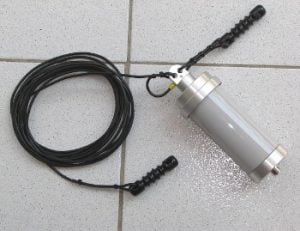
Photo Credit By Wikipedia; C.C
Antenna wire
This is a significant feature to look out for. Though standard insulated copper wire can be used, it’s discovered that copper stretches after a long while.
Hard drawn copper wire is a better option since it stretches less and is less flexible. Flexibility isn’t a factor to consider as the wire doesn’t need to bend much.
Dipole center and Balun
Tensions exerted on wires can lead to strain. With a dipole center, tension can be reduced to the barest minimum and prevent damage to the feeder.
Connect dipole center with open-wire feeder or coaxial.
A balun may be used instead of a dipole center. Also known as a transformer, balun works in telephone lines and transmitters.
It can be connected to a dipole’s feeder, which in turn links the two radiating antenna legs with the coaxial feeder.
Insulators
It’s ideal for placing insulators at both ends of the antenna as they provide lots of benefits.
Maximum voltage is felt at both ends of the antenna. The potential difference (voltage) can be high, particularly if high power transmitters are connected to the antenna.
The wire can be linked to the insulators, which are then fixed to a nylon rope.
The feeder
The feeder is another aspect to check before choosing your choice of dipole antenna to purchase.
This antenna dipole is also essential for constructing learner’s dipole and balun when fixing a cable to the house.
Initially, a coax wire is the best choice for this process because it is simple to operate and tolerates nearby antennas.
The approximately 500-watt cable must attach to the feeder transmissions; this is for ham radio equipment.
Impedance & dipole feeding
The primary feature of the dipole antenna is its feeding impedance.
The dipole is a balanced antenna when the double parts of the antenna are connected to the ground; the first step to be considered is the balanced feeder, such as unclosed wire, double feeder or two parallel wires could be used for its feeding.
However, this feeder has a little loss grade and can also be used instead of HF.
This feeder is hard to use for building and shop entrances because any nearby items could destroy the feeder balance and loss increases.
Still, a coaxial cable can prevent these predicaments.
It prevents the RF that runs through the cable outer can be used with a transmitter; this helps to quicken the receiver’s response and passes interferences to close users.
Another essential feature of dipole feeding through a feed system with the actual impedance is to allow the appropriate power to be transferred to the dipole.
The dipole balance impedance must be 73Ω, but this dipole is scarce because the impedance changes by different factors that involve the ground height, wire strength, and other factors.
Indoor and outdoor dipole antenna
When you get a new television, the first thing to check is if the television comes with an indoor or outdoor antenna.
Typically, the indoor antenna signal could be disturbed by the house’s wall, bulb interference, electronic gadgets, and other reflection from the room.
The indoor dipole antenna is the best antenna choice for someone who lives in an extreme signal processor area.
The outdoor antenna is costly and uses a long cable, but it has an average capacity to pick up signals. This antenna is suited for an area that has a low signal processor.
Frequency Coverage
You can sometimes buy an antenna as a digital Antenna, which is faster to work with television than analog and digital transmission.
The television frequency coverage must be checked when you buy a television. However, most of the television is a UHF model.
Optionally, the log season antenna is also known as “Wide band antenna,” and can be used to boost your interrupted television signal.
Still, some countries that use VHF cast television must ensure to use the same product antenna.
You must ensure that you get the best television antenna that will suit your area signal.
Note: you must understand that different areas in some countries don’t use the same Television channel, although they are classified into a group to make the antenna bandwidth reach all the areas.
Types of dipoles
Half-wave dipole
As the name implies, it gained this name due to its length. This type of dipole is a standard dipole antenna used where an electronic wavelength is found.
However, different types of antennas are for different exercises.
This dipole antenna comes with a shorter electronic half-wavelength than free space half-wavelength due to the quantity of wire needed for transmission.
Dual half-wave dipole antenna
However, the most common dipole antenna is the half-wave dipole antenna. An easy to operate dual half-wave dipole could be used because it has a different radiation pattern.
A dipole antenna could be handled away from its resonant voltage and fed with an extreme impedance feeder, which helps the antenna be handled over a large bandwidth.
When you want to use this type of dipole antenna as a primary frequency transmitter, a dual dipole antenna must be considered appropriate for this process.
Foldable dipole antennas
This is a type of dipole antenna that folds to the back by itself.
This dipole requires another wave conductor to the original dipole substance to allow the other antenna to be fixed to give DC a short circuit.
The other conductor allows the folded dipole to give a more extensive feed and wide bandwidth.
Short dipole
According to its name, this type of dipole antenna is a type that has the shortest length than that of half wavelength.
An increase in the feed impedance and changes will work in response to the frequency when the dipole is shorter than half of the wavelength.
It requires special feeding procedures before it can accommodate higher feed impedance. It has a lower grade than antenna dipole that has a large wavelength.
No resonant dipole
A dipole antenna could be handled away from its resonant voltage and fed with an extreme impedance feeder; this helps the antenna handle a large bandwidth.
Conclusion
In our comprehensive review, we chose MFJ-1778M G5RV as the best brand for dipole antenna.
There are other quality dipole antenna brands for you to choose from based on your need and preference.
Ensure you check their features; consider the benefits and complaints before making a purchase.
Whether you want a large directive antenna or a compact one that fits in a small space, there’s an option for everyone.
Similar Posts:
- How To Build A Dipole Antenna – Simple DIY At Reasonable Budget
- Top 7 Best 160 Meter Antenna 2024 (Reviews & Buying Guide)
- 11 Best Marine TV Antenna Reviews in 2024 – Buying Guide
- 10 Best SWR Meter For Ham Radio And CB Radios 2023 Reviews
- Micropower Broadcasting: A Technical Primer (How to Start a Micro-Radio Station)

